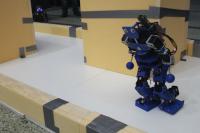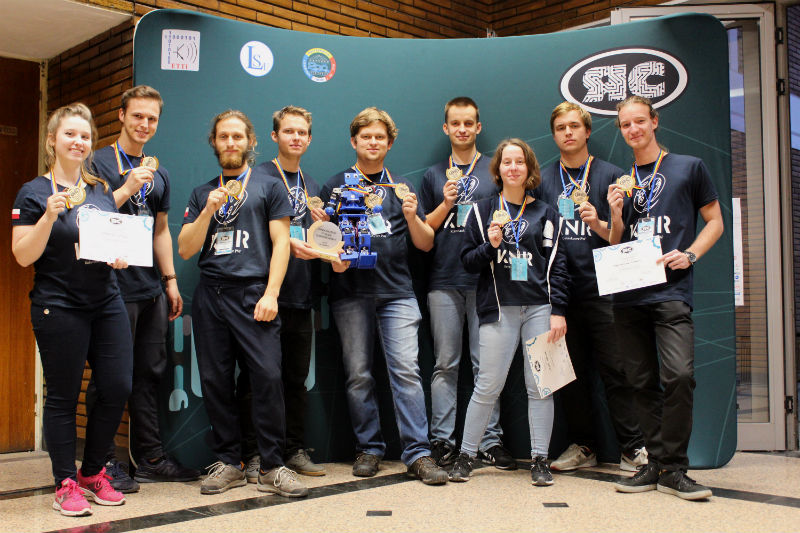Melson – a humanoid robot designed by students of the Warsaw University of Technology
It attracts interest everywhere it appears. And it’s not because of its distinctive blue color, it’s because of its impressive capabilities. Meet Melson and its creators – students of the Robotics Student Research Group (KNR) at the Faculty of Power and Aeronautical Engineering of the Warsaw University of Technology.
Melson is 45 cm tall and weighs 2.7 kg. Most of the robot’s components have been 3D printed in ABS. Advanced design work started two years ago and the team has worked on the current software for a year. The robot made its debut at RoboComp 2018 in Kraków.
How is it possible that Melson even moves? “First, the movement paths of the hands, feet and the centre of gravity are drawn, and then the angles to be fed into its engine are mathematically determined”, explains Kacper Mikolajczyk, the project coordinator.
What distinguishes the KNR’s humanoid is a proprietary implementation of inverse kinematics, which allows the robot’s movements to be freely generated. “With Kinect, Melson is capable of imitating human moves in real time”, explains Paweł Żakieta.
Robots like athletes
This skill of Melson’s grabs attention at picnics, shows and presentations. However, the robot also takes part in sports-like competitions.
One of the most typical tournaments is Humanoid Sumo. Two robots are placed in a large ring (dohyo), and they are expected to knock down the opponent. Robots are fully autonomous and locate the opponent relying on sensor readings. “Infrared sensors are used to detect other robots,. They measure the distance in three directions”, says Larysa Zaremba. “Based on the measurements, the robot decides what move it should make: go forward, rotate or strike a blow.”
Can robots “play” football?
Recently, Melson won three prizes in the International Robotic Competition RoboChallenge 2019 in Romania (1-3 November 2019): it came out first in the Humanoid Robot category and second in the Humanoid Sumo category and received an honorary mention in the Freestyle Showcase category.
However, students from the Robotics Student Research Group are already thinking about improving their design. “Currently we are working on the use of the computer vision in the robot to detect opponents, determine their position relative to the robot or identify boundary lines”, explains Bartosz Bok. “Our intention is to go to RoboCup, which is a robotic football tournament – here the extra task will be to detect the ball.”
The Melson team: Maksymilian Szumowski (creator), Kacper Mikołajczyk (coordinator), Bartosz Bok, Dominik Górczynski, Kornelia Łukojć, Jerzy Piwkowski, Przemysław Płoński, Patryk Saffer, Jakub Soboń, Larysa Zaremba, Paweł Żakieta, Karol Niemczycki.
The trip to Robotic Competition RoboChallenge 2019 was funded under The Best of the Best! 4.0 project of the European Union Social Fund under the Operational Programme Knowledge Education Development 2014–2020.









